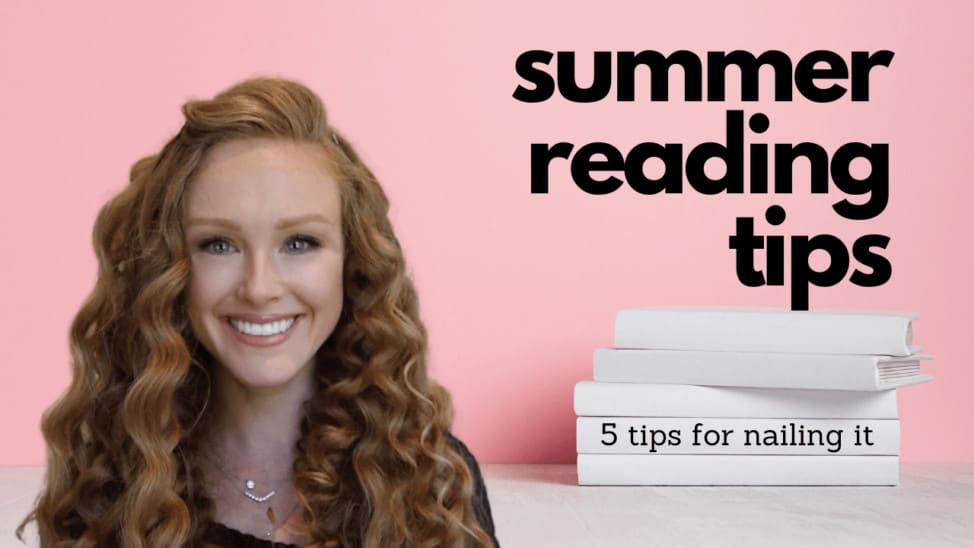By Katie Azevedo, M.Ed.
I’ve covered summer reading tips nearly every summer since I launched my business. Here’s where you can find all my other summer reading tips and resources.
In this post (and video!) I outline some of the tips I’ve covered before – with updates – and I add a few new ones to the mix as well.
Here we go – onto this summer’s summer reading tips
1. Make chapter summaries.
Directly after reading every chapter, write a brief 2-3 sentence chapter summary covering the main points. You could also do this in bullet form. Write your summaries right on the page, on a sticky note, or on a separate template. Here’s a resource for exactly how to write these summaries.
2. Give each chapter a title.
After you write the chapter summary for each chapter, give it a title. Most chapters are simply numbered (1, 2, 3, etc.) but even if the chapter already has a title, give it a new one. Don’t be fancy or creative; the title should concisely state the main idea.
3. Make a reading schedule.
No summer reading should ever begin without first creating a reading schedule. A reading schedule will give you an exact number of pages to read per day, which will ensure that you finish your books on time. I give step-by-step details for how to make a reading schedule in this resource here. And here is a free printable template to create your own summer reading schedule.
4. Prime yourself.
Anytime we learn something new, for the first time, our brains attempt to connect it to something we already know. This process is subconscious and happens automatically. (Think about it: If I gave you a brand new piece of fruit to try – one that you’ve never tried before – you would attempt to describe it based on what you already know. You might say something like Hmm… tastes a little like an apple but tangy like an orange.)
Before you read, do some Google-level research on the book, the topic, time period, author, themes, etc. Use Google Images in your search so that you find infographics and other helpful visuals.
5. Read the book “with” someone else.
Sure, you could actually read the book with someone else, but that’s not always possible. Instead, you and a friend / classmate who might be reading the same book, could agree to the same reading schedule. (The one that you created in step 3, of course.) That way you hold each other accountable to reading what you’re supposed to read, and you can share ideas about what you’re reading as well.
6. Bonus tip – sort of: Watch the movie.
Of course there is not a movie for every book, but you can find a video of some sort for many books on YouTube. Whether there’s a legitimate movie or something you found online, watch it after you read the book. Knowing you’re going to watch a movie as a reward can be motivating. Here’s the thing: you really have to watch until after you’ve finished the book because otherwise the storyline and visuals in the movie could conflict with the real storyline and the visuals in your head. No good.
Summer reading isn’t everyone’s favorite activity. I get it. But for most people, it’s required. So if you have to do it anyway, you’re better off trying some of these summer reading tips to make the whole process a little easier.


